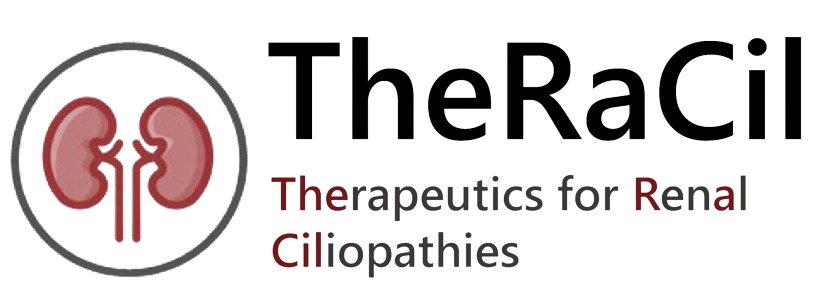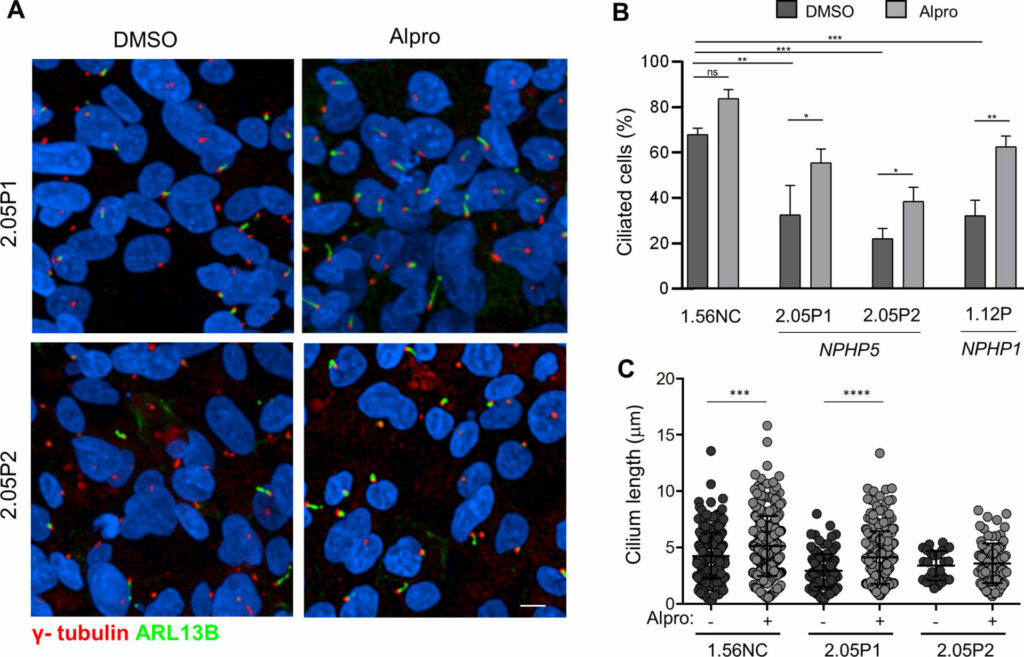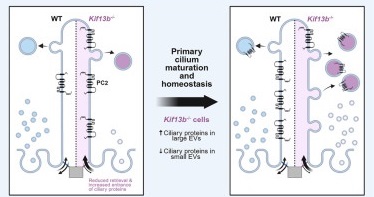News and Publications
Prostaglandin Analogs and Eupatilin as Treatments for Nephronophthisis
Tata et al, Kidney International Reports, Volume 10, Issue 8, p2821-2835, August 2025. https://www.kireports.org/article/S2468-0249(25)00285-2/fulltext
Background
Most of the cells forming our kidneys contain tiny structures called primary cilia that act like sensors, helping cells respond to their environment. When these cilia don’t work properly due to inherited genetic problems, it can lead to a group of diseases known as ciliopathies. One of these diseases is nephronophthisis (NPHP), a rare condition that affects the kidneys and often leads to kidney failure in children or young adults. Currently, there is no cure—patients usually need supportive care or a kidney transplant. This makes finding new treatments very important.
Methods
In earlier work, we discovered that certain drugs called prostaglandin analogues could help fix problems in the formation of cilia in kidney cells taken from NPHP1 patients. In this study, we looked at two more possible treatment options—ROCK inhibitor and Eupatilin—which other researchers have also found promising. We tested these drugs on kidney cells from patients with mutations in the NPHP1 gene and from other patients with mutations in NPHP5. We also used a zebrafish model with similar kidney defects to study how the drugs work in a whole organism.
Results
We found that Eupatilin helped repair the cilia in NPHP1 patient cells, possibly by slowing down how quickly the cells divide. This effect could support better cilia formation. Both Eupatilin and prostaglandin analogues also helped fix cilia issues in NPHP5 cells. However, only the prostaglandin analogues were effective in reducing kidney cysts in the zebrafish model.
Conclusion
Our research shows that some of these drug candidates can improve cilia function in different genetic forms of nephronophthisis. This suggests they may be useful as future treatments for patients living with this rare kidney disease.
Introduction
Primary cilia are sensory antennas that are present on the majority of quiescent vertebrate cells where they mediate key signaling during development and in response to environmental stimuli. Defects in primary cilia result in a group of heterogeneous inherited disorders with overlapping phenotypes, called ciliopathies. Nephronophthisis is an autosomal recessive tubulo-interstitial kidney ciliopathy with more than 25 identified genes called NPHP. Presently, no treatment exists beyond supportive care and kidney transplant, underscoring the need for novel therapies.prediction marker.
Methods
Using a phenotypic screening approach in cultured cell lines, we previously identified prostaglandin analogues as candidate therapeutic molecules based on their ability to rescue ciliogenesis defects in kidney tubular cells from NPHP1 patients. Here, we have investigated the potential beneficial effects of ROCK inhibitor and Eupatilin, similarly identified by other groups in different NPHP contexts, in kidney cells from NPHP1 and IQCB1/NPHP5 patients as well as in a zebrafish nphp mutant line (traf3ip1/ift54).
Results
Eupatilin partially rescued NPHP1-associated ciliogenesis defects. Transcriptomic analyses pointed out that cell cycle progression was inhibited by Eupatilin, likely explaining its broad effects on cilia assembly. Interestingly, while ciliary defects also observed in NPHP5 patient cells were rescued by both prostaglandins and Eupatilin, only prostaglandin analogues were able to reduce pronephric cysts size in the used nphp zebrafish model.
Conclusion
Our study indicates that these molecules can show beneficial effects across genetic contexts and shed light on their potential as therapeutic interventions for nephronophthisis.





